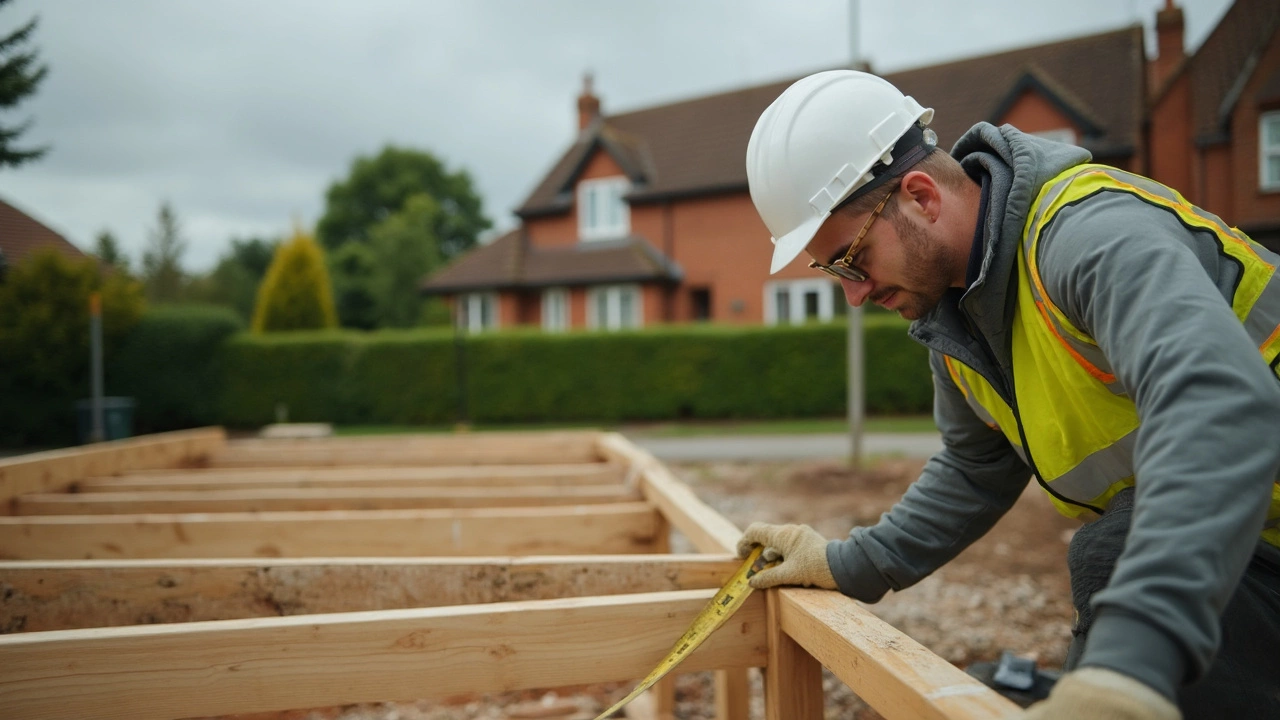The 3 4 5 method is an old-school but clever way to make sure corners in construction are a true 90 degrees. It's all about using simple math—think triangles and a tape measure—to get your building layout straight from the start. This method pops up everywhere from huge commercial projects to backyard sheds. You'll learn why it works, how to use it even if you've never picked up a protractor, and what can go wrong if you get sloppy. Read on to avoid common layout headaches and get crisp, square corners every time.
Construction Tips, Resources & Guides
Welcome to the construction hub at Aqua Tiles & Interiors. Whether you’re tackling a loft conversion, figuring out how long a new build settles, or choosing the right raw material, you’ll find straight‑forward advice here. We keep the language simple so you can understand the what, why, and how without digging through jargon. Grab a coffee, read on, and start turning those building ideas into reality.
Essential Construction Materials
Every solid project starts with the right material. Concrete, steel, and timber are the backbone of most builds, but you’ll also run into stone, brick, and newer composites. Concrete gives strength and durability; steel adds flexibility and load‑bearing power; timber is great for warmth and quick assembly. When you choose, think about the climate, the intended use, and your budget. For example, a brick exterior can endure wet weather, while a timber frame may be quicker to erect but needs proper sealing.
If you’re unsure which material fits your project, ask yourself three questions: Does it need to hold heavy loads? Is it exposed to moisture? How long should it last? Answering these will point you to concrete or steel for heavy duty, timber for interiors, and stone or brick for long‑term weather resistance. We also cover modern options like engineered wood and recycled steel, which can lower costs and environmental impact.
Common Building Challenges & How to Solve Them
Even seasoned builders hit snags. One frequent issue is foundation settlement – the slow shift that happens after a new build. It usually takes a few months to a couple of years for the ground to stabilize. To manage it, monitor cracks in walls, keep moisture levels steady, and avoid heavy loads on the slab during the first year. If you notice excessive movement, call a structural engineer early to prevent costly repairs.
Another typical problem is dealing with insurance gaps, especially for hidden damage like broken pipes under the foundation. Many policies exclude this type of repair, so reviewing your coverage before a project starts can save headaches later. Ask your insurer what’s covered, add extra riders if needed, and keep all repair receipts for future claims.
Ventilation and moisture control also trip up homeowners during renovations. Bad airflow can cause mold, while poor sealing invites leaks. Use breathable paints, install proper damp‑proof membranes, and place vents where moisture accumulates, such as bathrooms and kitchens. Simple steps like a dehumidifier during the drying phase can make a big difference.
We’ve gathered articles on loft conversion costs, TV placement mistakes, garden furniture on lawns, and more, all tagged under "construction". Each piece offers practical numbers, clear examples, and checklists you can copy straight into your project plan. Browse the list, pick the topics that match your current work, and apply the tips today.
Got a specific question? Our experts love hearing about real‑world projects. Drop a comment on any article, and we’ll get back with advice tailored to your situation. Building doesn’t have to be a mystery – with the right info, you’ll feel confident from the first shovel to the final finish.
Building contractors play a crucial role in the construction industry, overseeing the daily operations and managing the entire building process. They ensure projects meet quality standards, budgets, and deadlines. Whether it's a small renovation or a massive commercial development, contractors bridge the gap between architects, clients, and construction crews. This article delves into their responsibilities, qualifications, and the skills they bring to the table.
Renovating a house is exciting but can be daunting if you're unsure where to begin. The first step involves careful planning and setting clear goals to ensure a smooth process. Understanding your needs and prioritizing your tasks are key to a successful project. Without this foundation, you might face unexpected hurdles that could derail your renovation dreams. Here's how to get started on the right foot.
Commercial use in construction encompasses a variety of building projects designed for business purposes, such as office buildings, retail spaces, hotels, and warehouses. Understanding what falls under commercial use is crucial for developers, contractors, and investors to ensure compliance with zoning laws and regulations. The article explores the characteristics that define commercial construction projects, the distinctions between commercial and residential use, and the importance of clear communication among stakeholders. By examining real-world examples and offering practical tips, the piece aims to provide valuable insights for anyone involved in the commercial construction industry.



